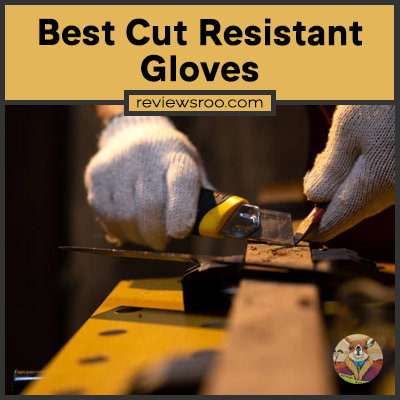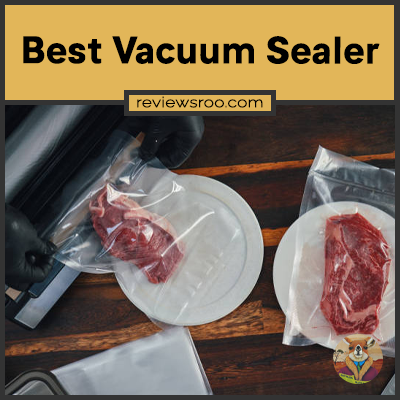Best Cut Resistant Gloves
Cutting yourself while handling sharp objects can be a real pain in the neck. That’s why having the right pair of gloves is essential for those who work with sharp objects.

But when it comes to choosing a pair of cut-resistant gloves, how do you know which one will best fit the bill?
Here, we’ll discuss what makes cut-resistant gloves so unique and why they are worth their weight in gold. We’ll also provide our picks for the best cut-resistant gloves on the market today, so you can make an informed decision that won’t leave you out in the cold.
What To Look For When Buying Cut Resistant Gloves
It’s like a sword fight without the swords. Buying cut resistant gloves can be tricky, and you don’t want to get caught in the crossfire. You need to know what to look for when selecting the best pair of gloves for you.
Protection is paramount—you don’t want your hands to get cut while you’re going about your job. Cut-resistant gloves come in different levels of strength, so make sure to check the label before buying. Look for gloves that are made of slash-proof material such as Kevlar or Dyneema and have reinforced palm protection. Choose ones with a snug fit but not too tight, so your hands won’t feel restricted. It’s also important to consider breathability, comfort, and durability when shopping around.
When purchasing cut-resistant gloves, make sure they meet your needs and offer the protection you require—your hands will thank you later!
Types Of Cut Resistant Gloves
Two types of cut resistant gloves exist: steel mesh and Kevlar. Steel mesh gloves are made from stainless steel wires woven together to form a mesh pattern. They provide superior protection against cuts, punctures, and abrasions and are ideal for heavy-duty tasks like woodworking or metalworking. Kevlar gloves, on the other hand, are made from strong synthetic fibers and offer good protection against cuts and abrasions. They’re lightweight and comfortable, making them ideal for lighter work such as food preparation or gardening.
Both types of gloves have their advantages and disadvantages. Steel mesh gloves are more expensive but offer greater protection against cuts, while Kevlar gloves are less expensive but do not offer the same level of protection. Ultimately, it comes down to personal preference as to which type is best for you.
No matter which type of glove you choose, both will provide excellent protection against sharp objects or hazardous substances that could otherwise cause serious injury. It’s important to choose the right glove for your job so you can stay safe while getting the job done quickly and efficiently.
Benefits Of Cut Resistant Gloves
Cut resistant gloves have many benefits. They provide protection from sharp objects and hazardous materials like glass, metal, and wood. They also keep hands safe from punctures, lacerations, and abrasions.
These gloves are comfortable to wear for long periods of time. They’re lightweight and flexible, so you won’t feel hindered by them. Plus, they provide good grip when handling wet or slippery items. So it’s easy to work with confidence knowing your hands are safely guarded.
That said, there are still some things to consider when selecting the right gloves for your needs. The level of cut resistance should match the task at hand to ensure maximum protection and comfort while working. Now let’s look at some common uses for cut resistant gloves.
Common Uses For Cut Resistant Gloves
Cut-resistant gloves are like a shield of armor for the hands, protecting them from sharp blades and cutting tools. They provide an extra layer of safety that is essential in many jobs and activities. Here are some common uses for these tough gloves:
- Food preparation: Cut-resistant gloves are invaluable in the food industry, preventing kitchen workers from getting injured while slicing and dicing vegetables, meat, and other ingredients.
- Construction: Building trades often require the handling of raw materials with sharp edges. Cut-resistant gloves help keep construction workers safe from cuts when working with lumber, metal, concrete blocks, and more.
- Gardening: Pruning shears can cause nasty nicks and cuts on unprotected hands. Wearing cut-resistant gloves prevents gardeners from suffering painful injuries while tending to their plants and flowers.
- Manufacturing: Industrial environments present plenty of opportunities to get cut by machinery or tools with sharp blades. Cut-resistant gloves protect manufacturing workers’ hands from injuries while they work on the job.
- DIY: Home improvement projects often involve cutting materials like wood, tile, plastic, or metal. To prevent injury, DIYers should invest in quality cut-resistant gloves before taking on any home improvement tasks.
Cut-resistant gloves provide an effective barrier between a person’s skin and potential hazards in many different fields—from food prep to manufacturing—making them an invaluable piece of safety equipment for workers all over the world. Moving on to looking at both sides of this important protective gear…
Pros And Cons Of Cut Resistant Gloves
Pros and cons of cut resistant gloves. Cut resistant gloves are a great way to protect hands when doing tasks that involve sharp objects. But there are some drawbacks you should consider.
The biggest plus is protection from cuts and scrapes. This makes them ideal for handling knives, glass, metal and other sharp objects. They also provide grip and prevent the user from slipping or dropping items they are holding. Plus, they can be washed and reused multiple times before needing to be replaced.
On the downside, cut resistant gloves can be bulky, uncomfortable and hot in warm weather. They also need to fit correctly or they will not provide adequate protection from cuts or slips. Additionally, they can be expensive compared to other types of gloves and are not suitable for all kinds of work with sharp objects.
Cut resistant gloves offer many benefits but it’s important to weigh up the pros and cons before deciding if they’re right for you. Next we’ll take a look at popular cut resistant glove brands…
Popular Cut Resistant Glove Brands
When it comes to cut resistant gloves, no one has more selection than the popular brands. From Ansell to Showa, the array of options is truly staggering. Every brand is vying for attention, each claiming they have the best product on the market. But which ones are worth investing in?
To help you narrow down your search, here’s a list of the most popular cut resistant glove brands:
Ansell: They specialize in making gloves that offer superior protection against cuts and abrasions.
Pros:
- Durable construction and good fit.
Cons:
- Prices can be high.
Showa: Showa offers a wide range of cut-resistant gloves that are designed for maximum comfort and grip.
Pros:
- Versatile design and great value for money.
Cons:
- Not as durable as some other brands.
Ironclad: Ironclad makes gloves that are made from high-grade materials for maximum durability and protection against cuts and punctures.
Pros:
- High-quality construction and excellent protection against cuts and punctures.
Cons:
- Expensive compared to some other brands.
No matter which brand you choose, you’re sure to get a quality product that will provide you with reliable protection from cuts and abrasions. Now all that remains is to determine which glove is right for you based on ratings…
Cut Resistant Glove Ratings
Ratings for cut resistant gloves are important. They show which brands of gloves offer the highest level of protection. It’s essential to find gloves with the best rating possible.
Different standards exist for measuring ratings, but all adhere to a similar process. The material is tested by exposing it to sharp blades and measuring the force required to penetrate it. This data is then used to assign a rating based on its performance. Gloves with higher ratings offer more protection than those with lower ratings.
When selecting cut resistant gloves, make sure they are rated according to your needs. Look for gloves that meet or exceed the requirements of the task at hand and remember to check the manufacturer’s instructions for proper care and maintenance.
Care And Maintenance Of Cut Resistant Gloves
Caring for cut-resistant gloves is a science. It’s an arduous task that requires dedication, focus and a whole lot of patience. But don’t worry – we’ve got you covered! Here are the 5 steps to ensuring your gloves last:
- Don’t put ’em in the washing machine – Use a damp cloth and mild detergent to wash your gloves.
- Keep them away from heat – Heat will damage the protective layers of the glove, so keep them away from any kind of high heat sources.
- Store them properly – Hang or fold your gloves after use, always making sure that they don’t come into contact with any sharp objects or abrasive surfaces.
- Check the manufacturer’s instructions – Different materials require different care methods, so make sure you follow the instructions provided by the manufacturer accurately.
- Replace when needed – If you can see signs of wear and tear, it’s time to get new gloves!
With these tips, you’ll be sure to keep your cut-resistant gloves in top condition and ready for action! Now let’s take a look at some alternatives to cut resistant gloves…
Alternatives To Cut Resistant Gloves
It’s often thought that cut resistant gloves are the only sure-fire way to protect workers from lacerations. But is that really true? While it’s important to wear proper protection when working with sharp objects, there are alternate solutions for those looking for more options.
Here’s a list of alternatives to cut resistant gloves:
- Using cutting boards or mats when handling sharp objects
- Wearing aprons or long sleeves to create a physical barrier
- Utilizing puncture-proof gloves for added protection
- Applying bandages and other first aid items as needed
- Operating machinery with safety guards in place
All of these methods can be used in addition to wearing cut resistant gloves, or as a standalone solution depending on the situation and risk level involved. Plus, they don’t require costly investments like many specialized cut resistant gloves do. No matter which option you choose, always make sure you’re following safety guidelines and protocols while on the job site. Transitioning into proper glove regulations can help ensure your safety and peace of mind while at work.
Cut Resistant Glove Regulations
Regulating cut resistant gloves is as difficult as untangling a ball of string. With an ever-changing array of products and technologies, it’s important to know the specific rules that govern these tools, especially when safety is involved.
When it comes to protective gloves, the laws vary from place to place. It’s necessary to research local and national regulations in order to determine the requirements for purchasing and using such items. In some countries, certain types may be certified by a governing body while in others they may be subject to approval from relevant authorities.
Different forms of protective apparel may require additional oversight or restrictions. For example, full arm protection or flame-resistant materials might need approval before use in certain locations. It’s also important to be aware of any safety warnings that come with the product and ensure that all personnel have been properly trained in its usage and limitations. Ultimately, following the guidelines set out by regulatory bodies can help ensure safe working conditions for those who rely on cut resistant gloves for their livelihoods.
Frequently Asked Questions
Are Cut Resistant Gloves Appropriate For Food Handling?
Cut resistant gloves are a miracle of modern technology! They are like a shield that protects your hands from harm, providing safety like no other. But are they appropriate for food handling? Let’s explore.
First off, cut resistant gloves have an impressive level of protection. They come with features such as:
- advanced materials that make them 10 times stronger than regular gloves
- superior grip and dexterity
- excellent flexibility, allowing you to move your hands freely while wearing them. These features can help ensure that food is handled safely and efficiently.
That said, it’s important to consider the environment in which the gloves are being used. If the kitchen is very hot or if there are sharp objects present, then cut resistant gloves may not be the best option. It’s recommended to use traditional kitchen gloves instead, as they provide enough protection without sacrificing comfort and mobility. So always think about the situation before deciding which type of glove is suitable for food handling.
What Is The Difference Between Cut Resistant And Puncture Resistant Gloves?
Cut resistant gloves can provide protection against sharp objects and blades, but they are not always suitable for food handling. Puncture resistant gloves are designed to protect against pointed objects and can be used in some food-related applications.
The biggest difference between the two is that cut resistant gloves are typically made from fabrics, while puncture resistant gloves are usually made from thicker materials such as leather or rubber. Cut resistant gloves have a higher level of flexibility and breathability than puncture resistant gloves, which can make them more comfortable to wear for long periods of time. However, puncture resistant gloves offer better protection against sharp objects that could cause injury.
TIP: To ensure you get the proper glove for your specific application, check with your employer or manufacturer for recommendations on cut and puncture resistance levels.
How Long Do Cut Resistant Gloves Typically Last?
Cut-resistant gloves are essential for a variety of jobs, but do they last? It’s important to know the answer to this question before investing in a pair. After all, who wants to buy a product that won’t provide protection?
Gloves made with cut-resistant materials have an average lifespan of up to 6 months. This depends on how often they’re used and if they’ve been cared for properly. For instance, regular washing and drying can help extend their life, as can storing them correctly when not in use. That said, cheaper models may not hold up as long as more expensive ones, so it’s worth doing your research before buying.
Do Cut Resistant Gloves Provide Protection From Electric Shocks?
Cut resistant gloves offer protection from sharp objects, like knives and glass shards. But do they protect against electric shocks?
The short answer is no. Cut resistant gloves don’t protect against electric shocks. They’re designed to provide protection against cuts, punctures and abrasions. So if you’re working with electricity, it’s best to use insulated or rubber gloves to protect yourself from electric shocks. Rubber gloves will also provide some protection against cuts, so you may want to wear both cut resistant and rubber gloves for maximum safety.
Are There Any Health Considerations When Wearing Cut Resistant Gloves?
Cut resistant gloves are invaluable when it comes to protecting hands from sharp objects and blades. But, you’ve got to be careful not to cut corners when it comes to safety considerations. Are there any health concerns when wearing cut resistant gloves? Let’s take a closer look.
The short answer is yes – wearing cut resistant gloves can come with some risks. The most prominent of these is the risk of allergies or irritation due to the materials used in construction. This isn’t something that should be taken lightly; if you don’t pay attention, it could be a real thorn in your side. To reduce this risk, make sure you purchase gloves that have been tested and certified for quality materials and construction. Additionally, try to find gloves that fit closely and comfortably on your hands – this will help to avoid chaffing and other irritations that can cause skin problems over time.
To err on the side of caution, always consult with your doctor before using any kind of protective gear like cut resistant gloves, especially if you have any pre-existing medical conditions or allergies. It’s better to be safe than sorry – after all, prevention is better than cure!
Conclusion
Cut resistant gloves are a great investment for those who handle food, tools, and other sharp materials. They provide a layer of protection that can last for years with proper care. They not only help to prevent cuts and punctures but also offer some level of protection against electric shocks. With all of these benefits, it’s important to keep in mind the potential health risks associated with wearing them.
It is essential to make sure the gloves fit properly and are made from quality material. If they don’t fit correctly or are too thick, it can become difficult to work with delicate items or perform intricate tasks. Furthermore, having gloves that are too tight can cause discomfort and soreness after extended use.
Overall, cut resistant gloves can be a great addition to any safety wardrobe if you understand how to properly use them and take care of them. As long as you take the necessary precautions when wearing them and replace them when needed, they can provide an extra layer of protection against injury that could significantly reduce your risk of harm while handling sharp objects.



